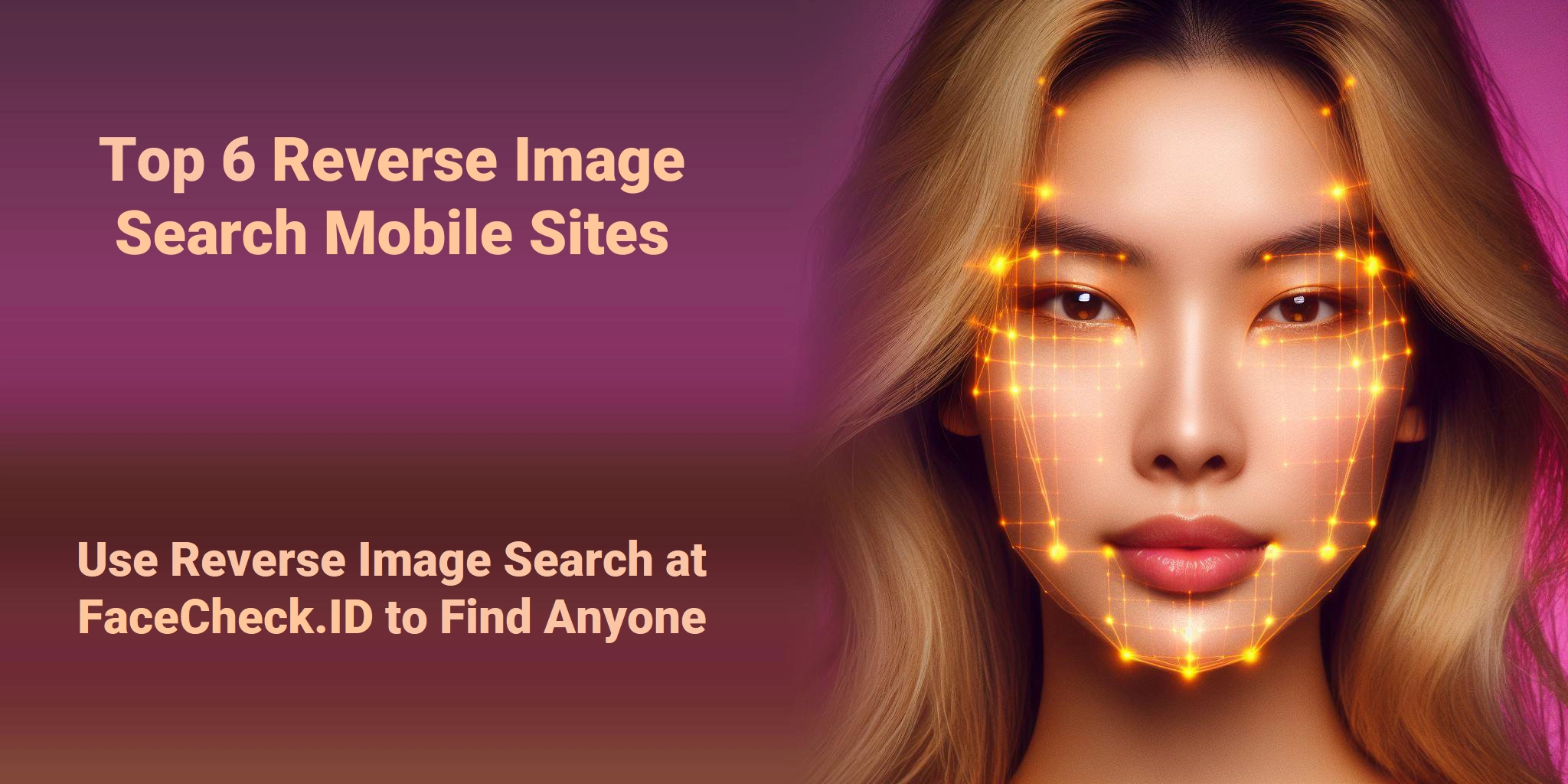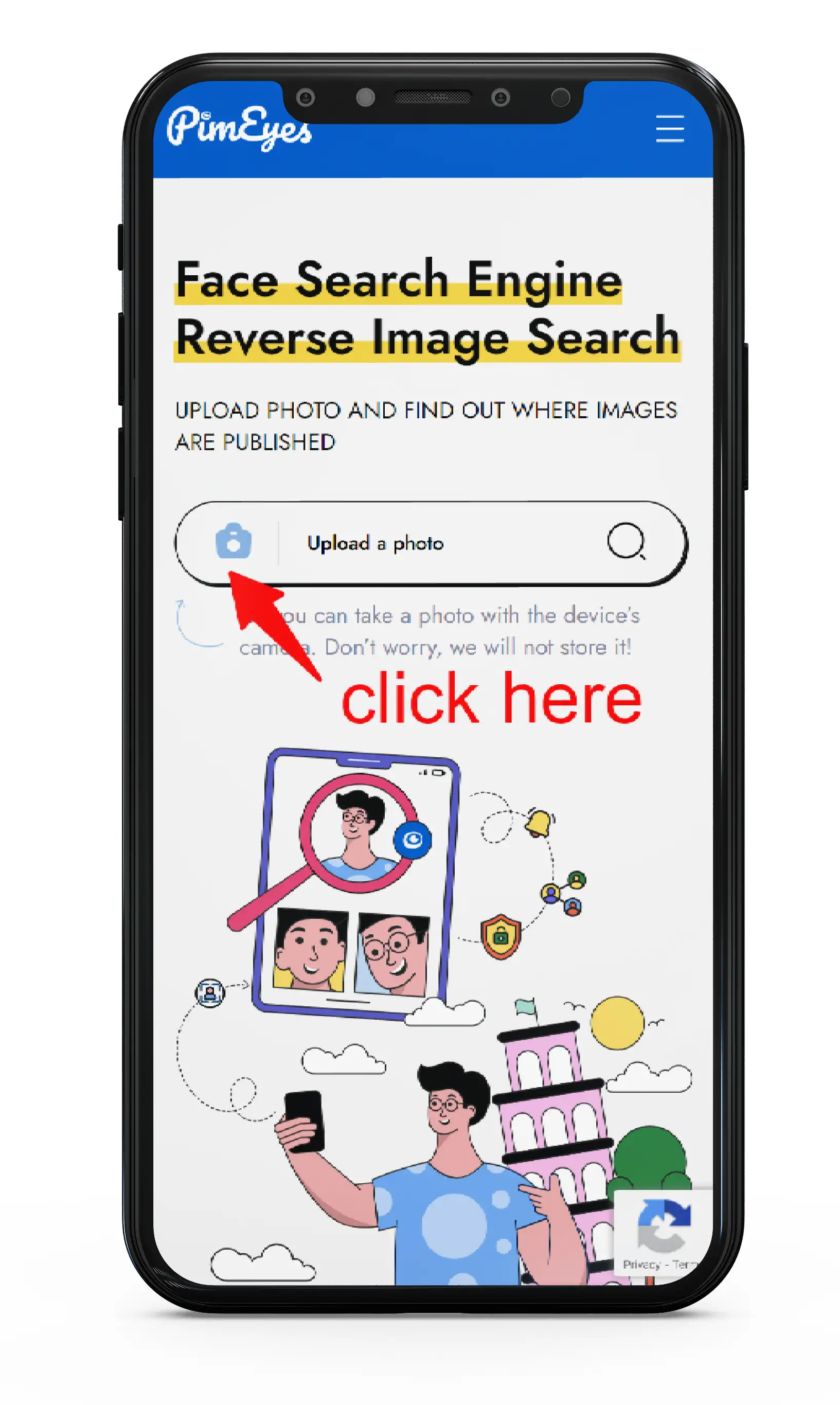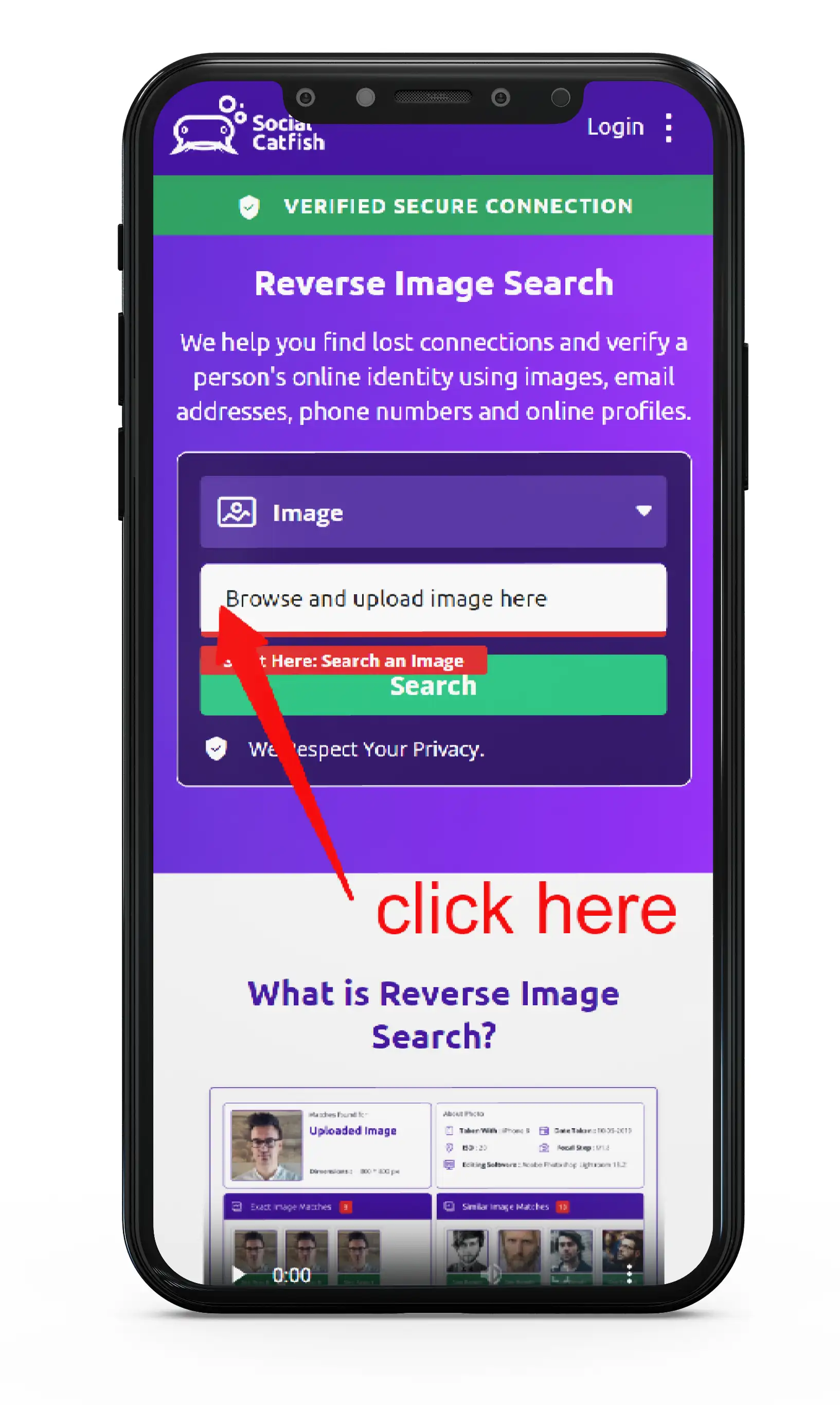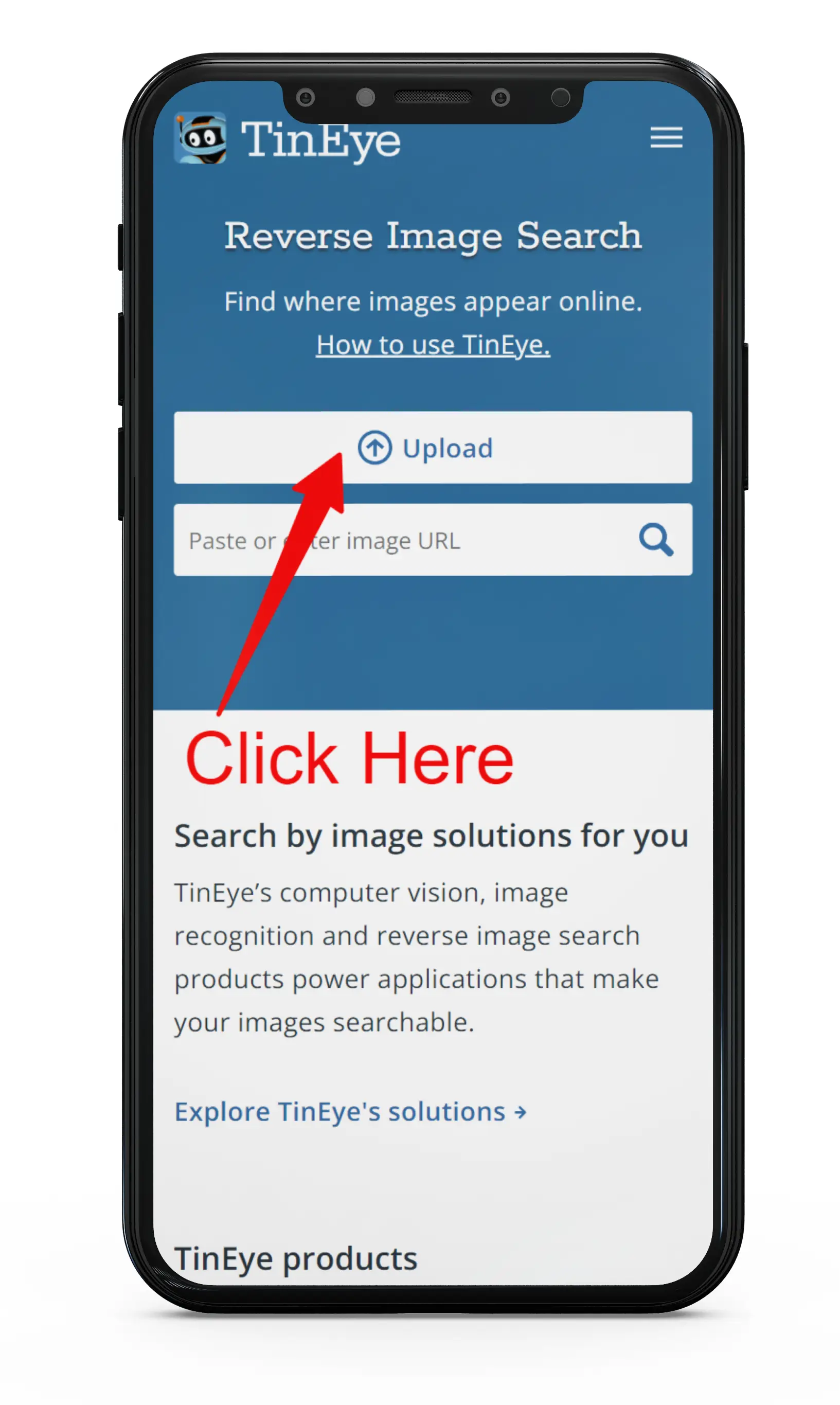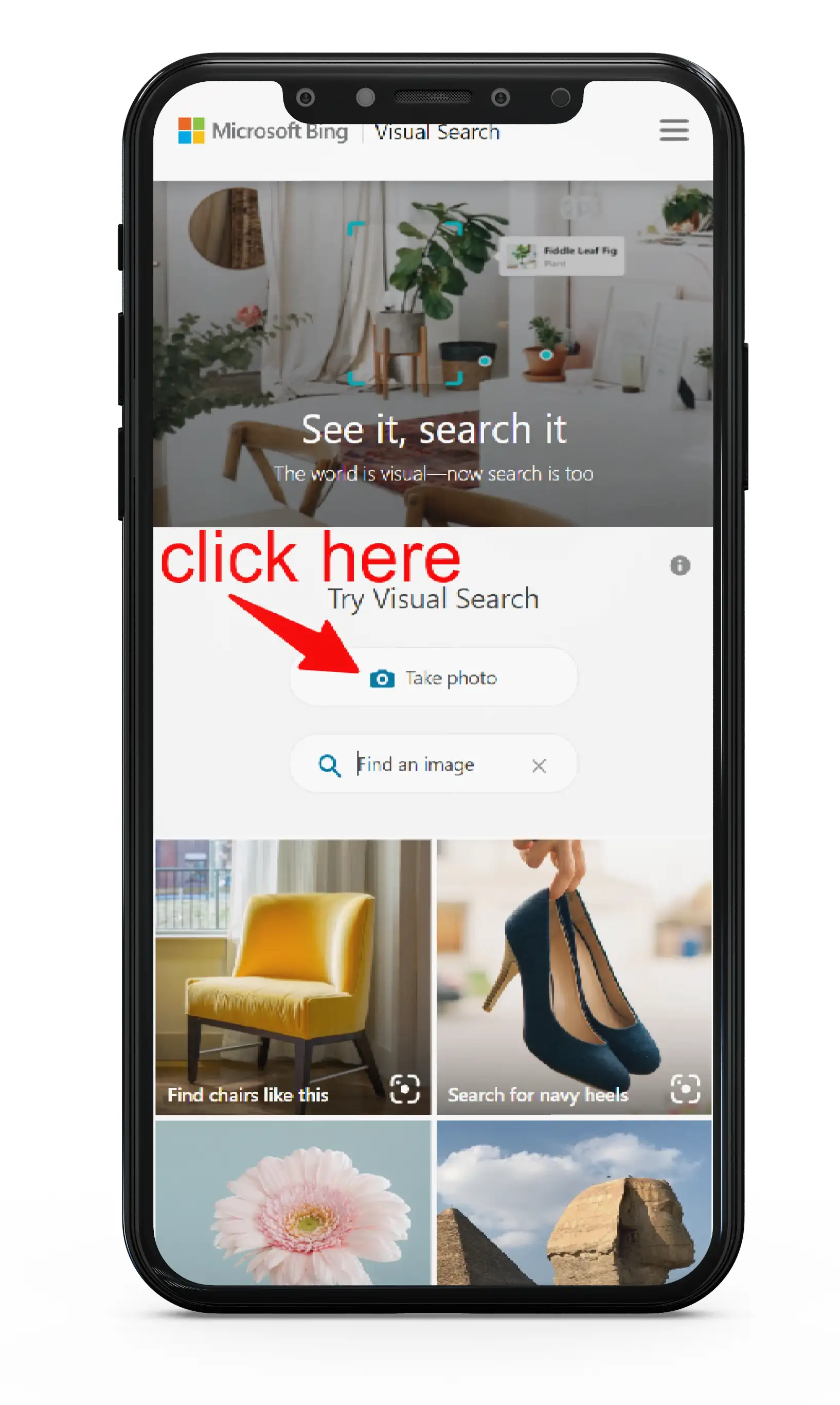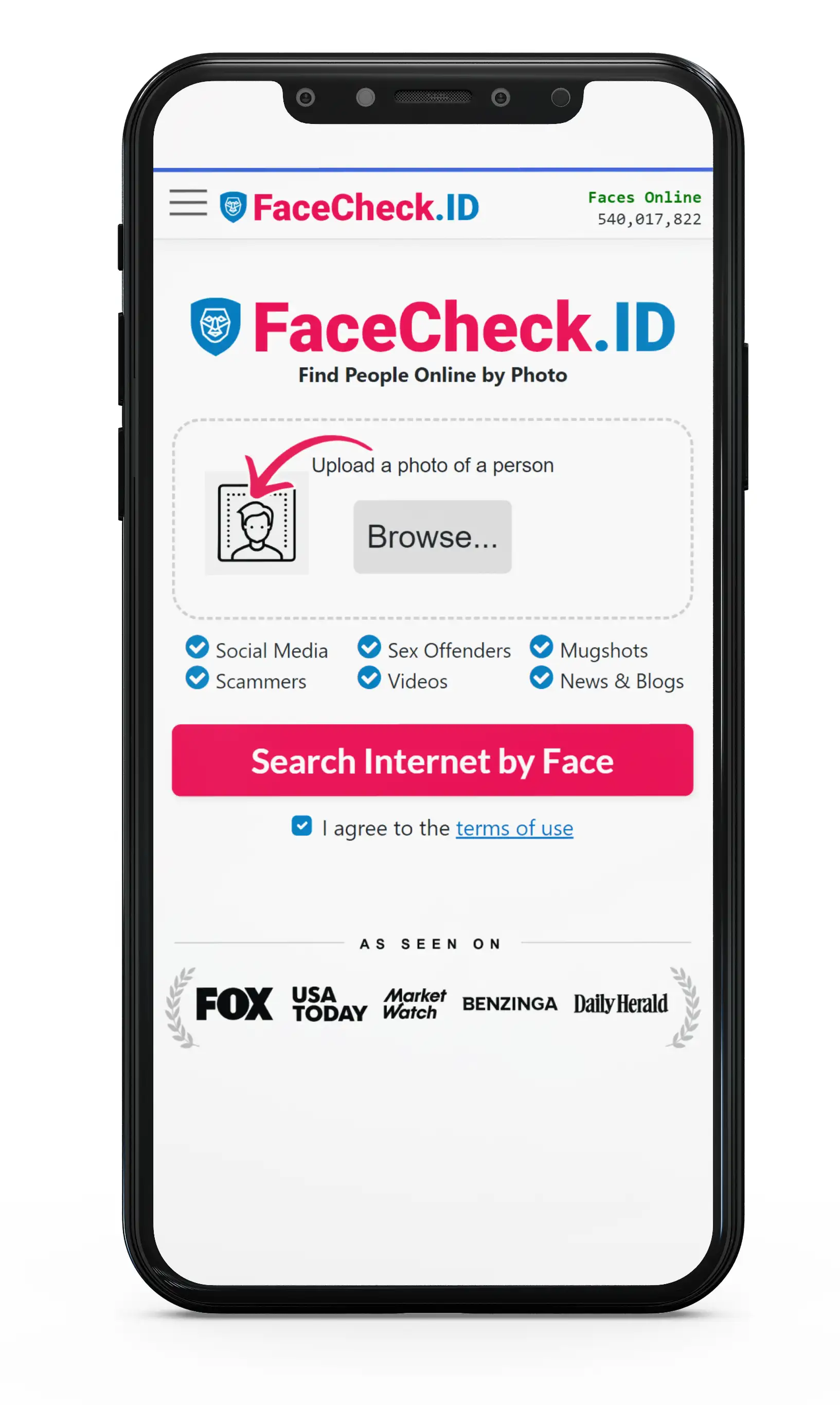Top 6 Reverse Image Search Mobile Sites to Find People, Products, and Places
An image's journey is as vital as its content. With reverse image search, we trace its footsteps.
In this article, we're going to discuss
- FaceCheck.ID, PimEyes, and Social Catfish: Specializing in Reverse Image People Search
- Google Images, TinEye, and Bing: Best for Products and Places
- Diverse Data Sources: Why Using Multiple Platforms Enhances Search Results
- Using FaceCheck.ID Reverse Image Search on Mobile
- Key Benefits of Choosing FaceCheck.ID for Mobile People Search
- Potential Limitations and Important Considerations of Reverse Image Search
- Face Embeddings: The Core Algorithm Behind FaceCheck.ID
- Technical Overview
- Practical Implications
- VIDEO: How To Do A Google Reverse Image Search On Mobile Devices
- VIDEO: How To Reverse Image Search on Mobile
FaceCheck.ID, PimEyes, and Social Catfish: Specializing in Reverse Image People Search
FaceCheck.ID:
- How to Use: Visit FaceCheck.ID on your mobile. Upload the image of the person you're searching for. The platform will then scan its database for potential matches.
- Strengths: Designed specifically for people searches, it offers a high degree of accuracy and respects user privacy.
- Tips: Ensure the face in the image is clear and unobstructed for best results.
PimEyes:
- How to Use: Visit PimEyes on your mobile browser. Upload the image and wait as PimEyes scans the web for similar faces.
- Strengths: Comprehensive search across the internet, including websites, forums, and social media.
- Tips: PimEyes can also gauge the popularity of an image, helping you understand its reach online.
Social Catfish:
- How to Use: Navigate to Social Catfish website. Upload your image. The platform will then search social networks and online profiles for matches.
- Strengths: Specializes in verifying online identities, making it invaluable for online dating or vetting potential online acquaintances.
- Tips: Use Social Catfish to safeguard against online scams or fake profiles.
Google Images, TinEye, and Bing: Best for Products and Places
Google Images:
- How to Use: Go to Google Images on your mobile browser. Click on the camera icon in the search bar. You can either paste the image URL or upload an image from your device. Hit 'Search' and let Google do its magic.
- Strengths: Extensive database, high accuracy for popular products and landmarks, and integration with Google's vast ecosystem.
- Tips: For better results, use clear and high-resolution images. If searching for a product, try to capture it against a neutral background.
TinEye:
- How to Use: Navigate to the TinEye website on your mobile browser. Tap the upload button to select an image from your device. Once uploaded, TinEye will display matching results.
- Strengths: Specializes in finding exact matches and can track where an image appears online.
- Tips: TinEye is particularly useful for identifying instances of image misuse or copyright violations.
Bing Visual Search:
- How to Use: Open Bing visual search on your mobile browser. Tap the camera icon in the search bar. Upload your image and wait for the results.
- Strengths: Integrated with Microsoft's search engine, it offers diverse results, including shopping links for products.
- Tips: Bing Visual Search is not just limited to image matches; it can also provide information on similar items, making it great for shopping.
Diverse Data Sources: Why Using Multiple Platforms Enhances Search Results
In the realm of reverse image search, no single platform holds the key to the entire internet. Each search engine or service taps into different databases, utilizes unique algorithms, and offers specialized features. This diversity in data sourcing means that while one platform might excel in identifying products or places, another might be better suited for people searches.
For instance, while Google Images might provide a plethora of results for a popular tourist spot, FaceCheck.ID would be your go-to for identifying an individual from a photograph. Similarly, an image might not yield many results on TinEye but could lead to multiple matches on Bing Visual Search.
Key Takeaways:
- Comprehensive Search: To ensure you're not missing out on any crucial information, it's advisable to use multiple platforms. Cross-referencing results can provide a more comprehensive
- Accuracy & Verification: Using several platforms can also help in verifying the accuracy of the results. If multiple platforms point to the same source or provide similar information, you can be more confident in its authenticity.
- Specialized Searches: Platforms like FaceCheck.ID, PimEyes, and Social Catfish are tailored for specific searches, such as identifying individuals. Leveraging their specialized algorithms can yield better results for such queries.
Using FaceCheck.ID Reverse Image Search on Mobile
FaceCheck.ID has emerged as a leading platform for reverse image searches for people. Here's a step-by-step guide to harness its capabilities on mobile:
Uploading the Image:
- Tap on the grey 'Browse...' button.
- Choose the image from your device's gallery or take a fresh photo using your camera.
Initiating the Search:
- Once the image is uploaded, tap 'Search Internet by Face'. FaceCheck.ID will then process the image and begin its scan.
Interpreting Results:
- The results page will display potential matches, each with a confidence score. This score indicates the likelihood of the match being accurate.
- You can tap on each result to view more details or explore the source of the match.
Advanced Features:
- FaceCheck.ID offers filters to refine your search results, such as age, gender, or location filters.
- For frequent users, consider creating an account on FaceCheck.ID to access advanced features and keep track of your past searches.
Tips for Optimal Results:
- Use clear images where the individual's face is visible and well-lit.
- Avoid images with multiple faces to ensure the platform can focus on the intended individual.
- Regularly update the app or check the website for new features or improvements.
By following this guide, users can effectively utilize FaceCheck.ID for their reverse image search needs, especially when the focus is on identifying individuals. The next sections will delve deeper into the benefits of FaceCheck.ID and potential considerations to keep in mind.
Key Benefits of Choosing FaceCheck.ID for Mobile People Search
FaceCheck.ID isn't just another reverse image search platform; it's a tool tailored for those who prioritize accuracy, speed, and privacy when searching for individuals. Here's why it stands out:
Precision and Accuracy:
- FaceCheck.ID uses advanced facial recognition algorithms, ensuring that the matches you receive are relevant and precise.
- The platform's specialized focus on people search means it's optimized to deliver results that general search engines might overlook.
Privacy-Centric:
- In an age where data privacy is paramount, FaceCheck.ID takes user confidentiality seriously. Images uploaded aren't stored indefinitely, ensuring your searches remain private.
- The platform also offers features to control and manage your search history, giving users peace of mind.
User-Friendly Interface:
- Designed with mobile users in mind, FaceCheck.ID's interface is intuitive and easy to navigate. Whether you're a tech-savvy individual or a beginner, the platform ensures a smooth experience.
Diverse Database:
- FaceCheck.ID taps into a wide range of sources, from social media platforms to public databases, ensuring comprehensive search results.
- Its ever-evolving database means that with each search, you're accessing the most recent and relevant information available.
Rapid Results:
- Time is of the essence, especially when you're on the go. FaceCheck.ID is engineered for speed, delivering search results in mere seconds.
Potential Limitations and Important Considerations of Reverse Image Search
While platforms like FaceCheck.ID offer immense value, it's essential to approach reverse image search with a balanced perspective. Here are some considerations:
Image Quality Matters:
- The clarity and resolution of the uploaded image can significantly impact search results. Blurry or low-resolution images might not yield accurate matches.
Database Limitations:
- No platform has access to the entirety of the internet. While FaceCheck.ID has a vast database, there might be instances where certain images or sources aren't accessible.
Ethical Considerations:
- Using reverse image search, especially for people, comes with ethical responsibilities. Always ensure that your searches respect privacy laws and ethical boundaries.
- Avoid using the platform for malicious intent or stalking.
Interpreting Results:
- While platforms provide matches with confidence scores, it's crucial to use your judgment. Not every high-confidence match is accurate, and vice versa.
Reverse image search, especially on mobile, is a powerful tool in the digital age. Platforms like FaceCheck.ID, with their specialized focus on people search, offer users an edge in accuracy and efficiency. However, as with any tool, it's essential to use it responsibly and ethically. Whether you're verifying an online acquaintance or searching for more information about a photograph, platforms like FaceCheck.ID are here to assist, making the vast expanse of the internet a little more navigable.
Face Embeddings: The Core Algorithm Behind FaceCheck.ID
FaceCheck.ID, specializing in people searches, harnesses the power of Face Embeddings to identify and match faces. But what exactly are Face Embeddings, and how do they work?
Technical Overview
- Vector Representation: Face Embeddings involve converting the facial features of an image into a numerical vector. This vector, often in a high-dimensional space, captures the unique characteristics of the face.
- Deep Learning Models: Using deep learning, specifically convolutional neural networks (CNNs), FaceCheck.ID processes the input image to extract these facial features. The model is trained on a vast dataset, learning to differentiate between a myriad of faces.
- Distance Metrics: Once the face is converted into its embedding (vector form), the algorithm calculates the distance between this vector and others in its database. Faces that are similar will have vectors that are close in this high-dimensional space. Common distance metrics used include Euclidean distance or cosine similarity.
Practical Implications
- High Accuracy: Face Embeddings provide a granular representation of faces, capturing even subtle differences. This leads to high accuracy in matching, even distinguishing between faces that might look very similar to the human eye.
- Speed and Efficiency: By converting faces into vector representations, the search process becomes a matter of calculating distances between vectors, which is computationally efficient. This ensures rapid search results.
- Robustness: The algorithm's ability to capture the essence of a face in its vector form means it's robust against variations in lighting, angles, or facial expressions.
- Data Privacy: Since FaceCheck.ID only stores the vector representation (and not the actual image), it offers a layer of abstraction. This ensures that even if the data is accessed, reconstructing the original face from its embedding is extremely challenging.
By leveraging Face Embeddings, FaceCheck.ID offers users a powerful tool for reverse image searches focused on people. The algorithm's blend of accuracy, speed, and robustness ensures that users get reliable results quickly, making it a go-to platform for individual identification.
VIDEO: How To Do A Google Reverse Image Search On Mobile Devices
This video provides instructions on how to do a Google reverse image search on mobile devices. It covers three methods:
Using the Google app: Search for an image on Google Images, tap on the desired image, and use Google Lens to select a part of the image for the reverse search. The app shows visual matches from various sites.
Searching an image from specific sites like Facebook or Instagram: Long-press the image and choose "search image with Google Lens" to get visual matches.
Using the Google Photos app: Open the app, tap on a photo, and select the "Lens" option to search parts of the image and view matches.
The video summarizes these methods for easy reverse image searching on mobile.
VIDEO: How To Reverse Image Search on Mobile
In this video, we guide you through the process of reverse image searching using Google, whether you're on a smartphone or a desktop. On smartphones, you can either utilize images from the web or upload directly from your device. Desktop users have the added option of using an image URL or directly searching within Google Images. Dive in to harness the full potential of image-based searches!
Read More on Search by Selfie
Find Twitter Profiles by Photo using Search by Face Engine
In this day and age, social media is a powerful tool that can be used for many different purposes. One way to maximize its potential is by using image search to find Twitter profiles by photo. This can be done with the help of a face search engine called FaceCheck.ID. Can you use the Twitter app to find people by photo? No, the Twitter app does not have a function to find people by photo. However, you can use a 3rd party face search engine FaceCheck.ID to search for Twitter profiles by image...
On the subject in other languages
Top 6 Sites de Busca Inversa de Imagens para Celular para Encontrar Pessoas, Produtos e Lugares
查找人物、产品和地点的最佳6个反向图像搜索移动网站
Top 6 mobilních webů pro obrácené vyhledávání obrázků na nalezení lidí, produktů a míst
Top 6 Reverse-Bildsuche-Websites für Mobilgeräte zum Finden von Personen, Produkten und Orten
Las 6 mejores páginas de búsqueda inversa de imágenes en móviles para encontrar personas, productos y lugares
Top 6 des sites mobiles de recherche d'images inversée pour trouver des gens, des produits et des lieux
लोगों, उत्पादों, और स्थलों को ढूंढने के लिए मोबाइल साइट्स के शीर्ष 6 उल्टी छवि खोज
Top 6 Siti Mobile per la Ricerca Inversa di Immagini per Trovare Persone, Prodotti e Luoghi
人々、製品、場所を見つけるためのトップ6逆画像検索モバイルサイト
사람, 제품, 장소를 찾기 위한 최고의 6개 역방향 이미지 검색 모바일 사이트
Top 6 stron mobilnych do wyszukiwania obrazów wstecznie, aby znaleźć ludzi, produkty i miejsca
Топ 6 мобильных сайтов для обратного поиска изображений, чтобы найти людей, товары и места
أفضل 6 مواقع للبحث عن الصور المعكوسة على الهواتف المحمولة للعثور على الأشخاص والمنتجات والأماكن
İnsanları, Ürünleri ve Yerleri Bulmak İçin En İyi 6 Ters Resim Arama Mobil Sitesi
Popular Topics
Identity Social Media Image Search Facial Recognition Reverse Image Search Advanced Facial Recognition How To Facebook Instagram Google Images TinEye Catfishing Identification Fake Profiles PimEyes Online Dating Facial Recognition Algorithms Reverse Search Privacy Laws Visual SearchFaceCheck vs PimEyes: Which Search Engine Reigns Supreme?
